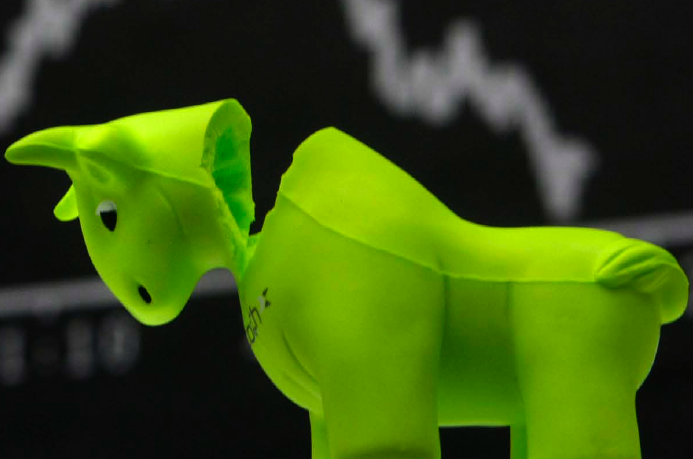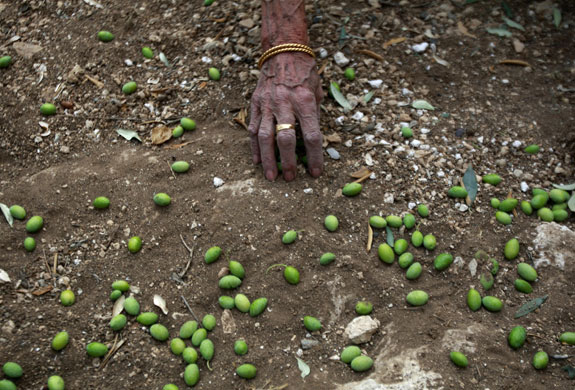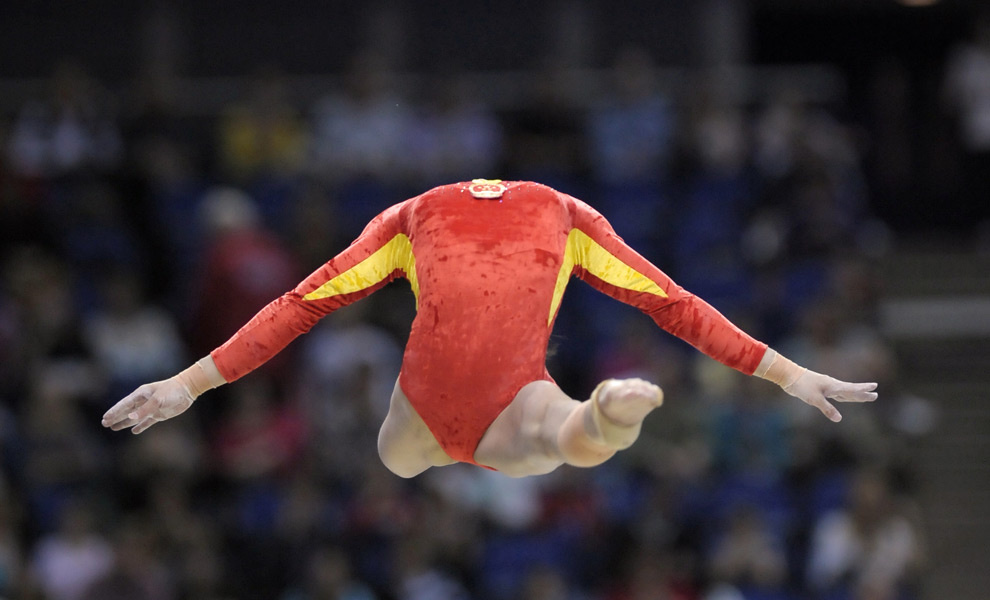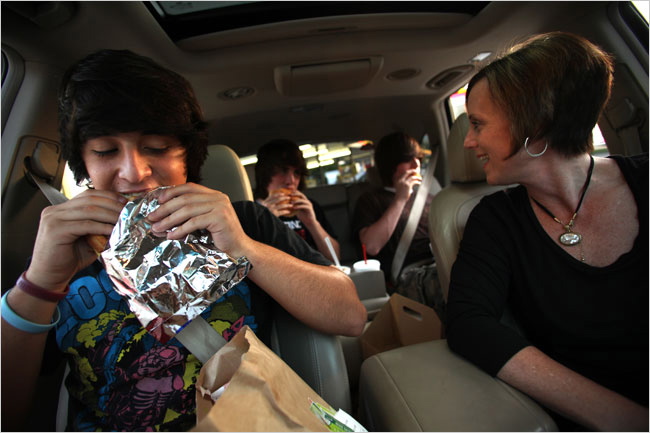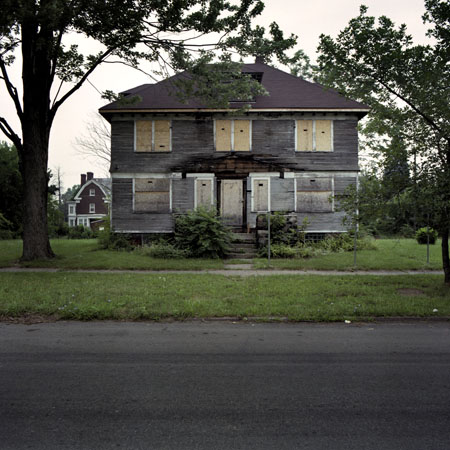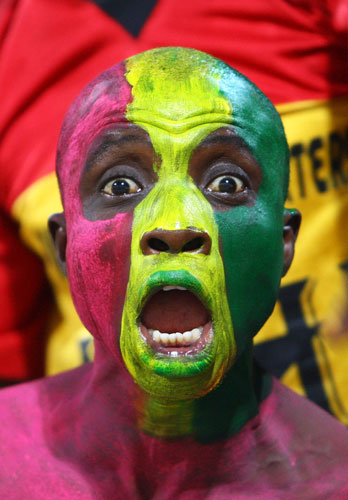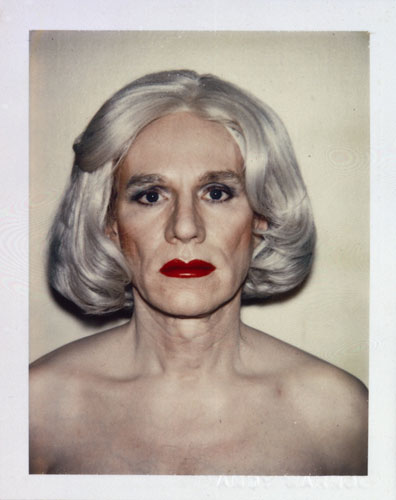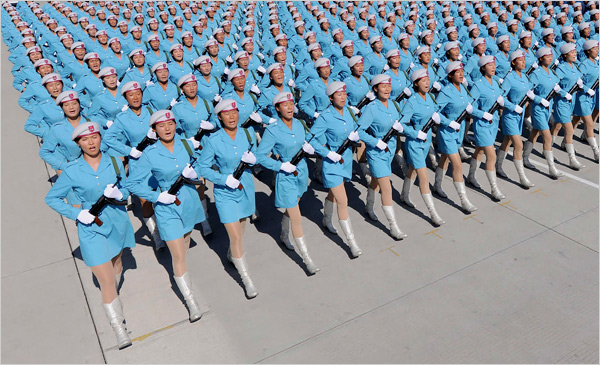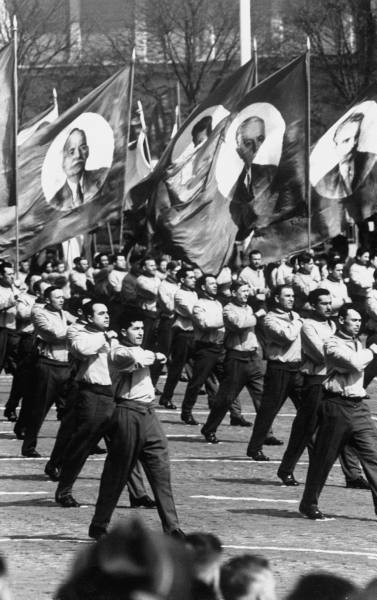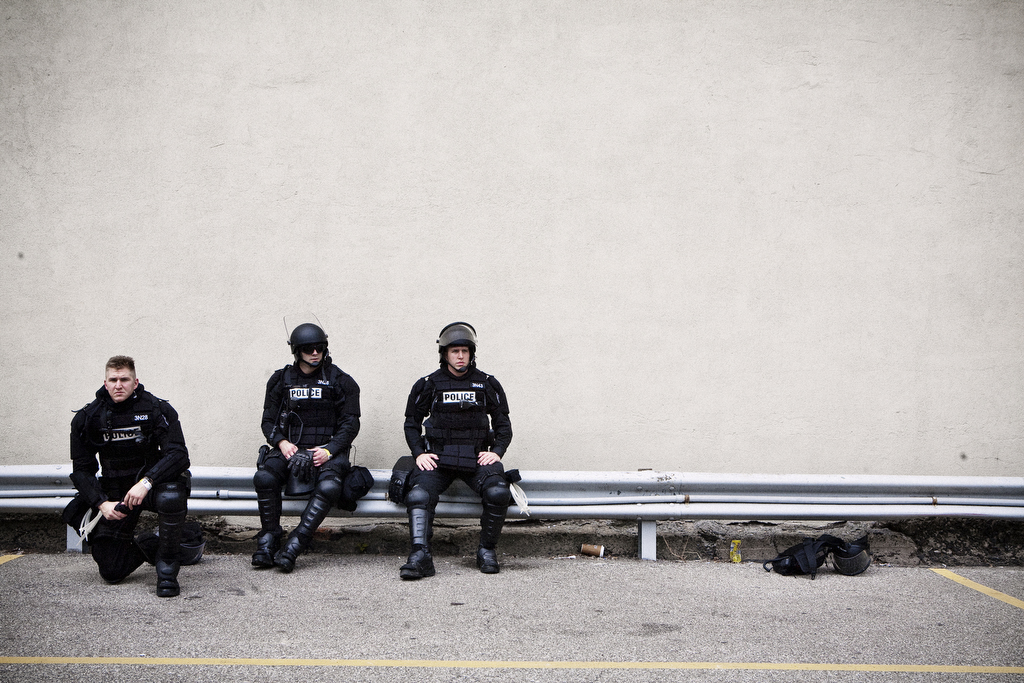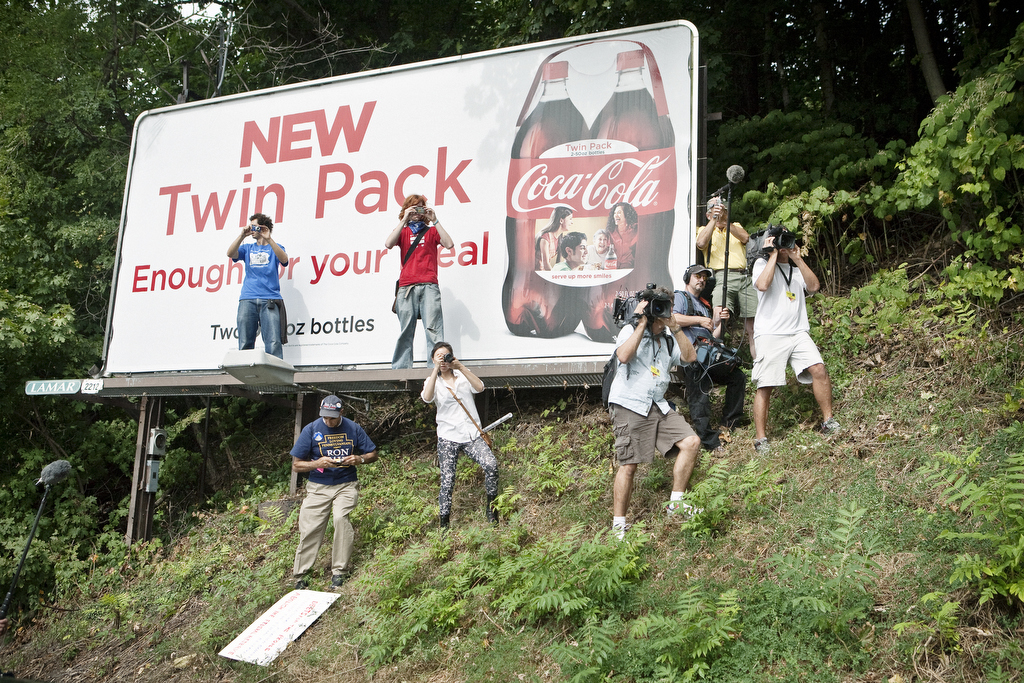The eye can see a great deal, but it rarely sees itself, and never directly. Perhaps that is one reason why photographs such as this one remain somewhat scandalous.

This close-up of an eye exam in Indonesia exposes the eye as an object of sight. We see a soft, wet organ, an aperature that ironically looks camera-like, and coloration that we know isn’t normal. The orange and red could be a sign of disease or only a diagnostic dye, but in any case the organ’s vulnerability is highlighted. The blunt thumb holding up the eyebrow is there to help, but it could just as easily blind the man, whose fragment of a face is tense with the strain of holding his eye unprotected before a bright light. His mute fear becomes even more animal-like when contrasted with the optical instrument in the left foreground. We are seeing an eye, but one that is trapped, first in disease and then in the clinical apparatus. His eye has been made an object of the clinical gaze, which comes from outside the frame.
This staging becomes even more intense in the next photograph.
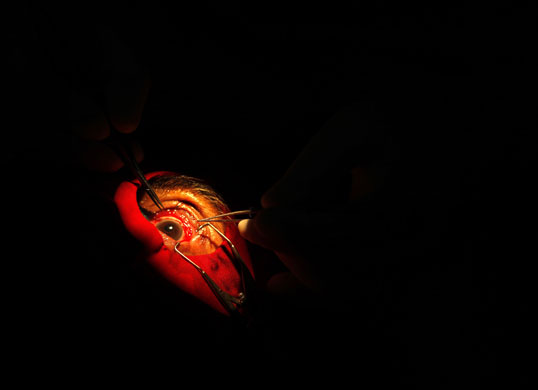
Once again, we see an eye isolated as an object of clinical manipulation guided by an instrumental gaze signified by medical instruments. All the dramatic values have been enhanced: the eye is more fully decontextualized, with even the face now absent; the instruments now are inside the eye cavity during surgery; the light on the eye is harsher while the eye itself is immobilized (and sure to be harmed if it moves). This is a moment of extreme vulnerability, but if any emotion is to be supplied it has to happen without any cue from the patient, who in fact could be anaesthetised. The emotional vector, if any, will follow another feature common to both images: the presentation of this clinical intervention to a third viewpoint, that of the spectator.
Every photograph can be thought of as being reflexive, that is, as showing not only some part of the world but also the act of seeing. That seeing can be further refined as seeing photographically, and as seeing individually, or publicly, or in many other senses as well. The two images above operate somewhat like popular science writing: they put the viewer alongside a medical intervention as if you could be part of the scene on the basis of your interest rather than actual expertise. Thus, one watches as if an attending physician or as if in an operating theater, but actually from a third position of the public spectator who becomes aligned with the structure of expertise.
It probably is significant that both the expert and public viewers are not visible. The eye being seen is completely subordinated to being an object of sight rather than a perspective on those watching, and one should note that the embodied eye is poor in the first case and blacked out in the second. So, it might seem that these images are not reflexive: the clinical eye is the eye examined, not that of the examiner, and the public is not represented in any form but the photograph itself. But as I’ve tried to suggest, the images can reveal quite a bit about two intertwined ways of seeing.
Photographs by Beawiharta/Reuters,
